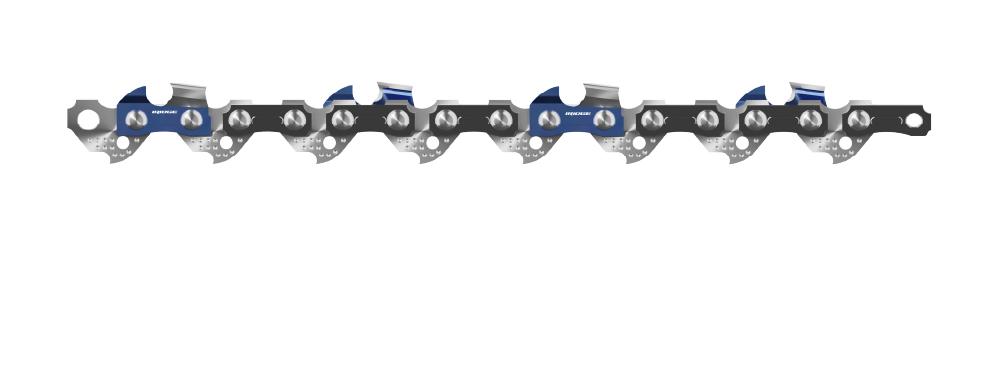When using chainsaw chains in cold or wet conditions, special attention should be paid to the effects of the environment on chain performance and life. Here are some key considerations and countermeasures:
Precautions in cold conditions
Cold conditions can have a significant impact on the material, lubricity, and operating performance of the chain. Here are a few areas to watch out for:
Chain material becomes brittle
Problem: Low temperatures can cause metal materials to become brittle, and the chain may break more easily.
Solution:
Use high-strength chains designed for low temperatures, which are usually specially treated to increase resistance to brittleness.
Before starting work, let the chainsaw idle for a few minutes to preheat the chain and guide bar to avoid sudden loading.
Lubricant solidification
Problem: Ordinary chain lubricants may become viscous or even solidify at low temperatures, resulting in reduced lubrication and increased friction and wear.
Solution:
Use low-viscosity, low-temperature resistant chain lubricants (such as synthetic lubricants) to ensure that they remain fluid at low temperatures.
Check regularly whether the lubricant flows out normally and clean the oil holes to prevent clogging.
Reduced operating flexibility
Problem: Low temperatures may increase friction between the chain and the guide bar, affecting cutting efficiency.
Solution:
Clean ice, snow or debris from the guide bar groove and chain before use to ensure smooth chain operation.
Allow a little slack when adjusting the chain tension, as the chain may shrink in low temperatures.
Cold start problem
Problem: The chainsaw is difficult to start in a cold environment, which may cause the chain to jam or abnormal wear.
Solution:
Use a chainsaw with a preheating function (if applicable).
Let the chainsaw idle for a while after starting to ensure that the chain and guide bar are fully adapted to the temperature.
Precautions in humid environments

Humid environments can easily cause problems such as chain rust, lubrication failure, and increased moisture content in wood. Here are a few aspects to pay attention to:
Prevent chain rust
Problem: Humid environments accelerate chain oxidation, causing rust and corrosion, affecting the service life of the chain.
Solution:
Use anti-rust lubricant, which not only lubricates the chain, but also forms a protective film to prevent moisture from contacting the metal surface.
After work, clean the chain and apply rust inhibitor in time, and store it in a dry place.
If the chain has slight rust, you can use fine sandpaper to gently polish it before lubricating it.
The lubricant is diluted
Problem: In a humid environment, water may mix into the lubricant, reducing its lubrication performance.
Solution:
Check the quality of the lubricant regularly and replace it if necessary.
Make sure the oil holes are unobstructed to prevent water from entering the oil system.
High moisture content in wood
Problem: The moisture content of wood in a humid environment is high, and more wood chips and muddy substances will be produced when cutting. These impurities will accelerate the wear of the chain and guide bar.
Solution:
Use a more wear-resistant chain (such as a carbide coated chain).
Clean the chain and guide bar regularly to prevent impurities from embedding in the chain or guide bar groove.
Electrical safety
Problem: If you are using an electric chainsaw, there may be a risk of leakage in a humid environment.
Solution:
Make sure the chainsaw has good waterproof performance (IP rating). Wear insulating gloves when operating and avoid using in rain or extremely humid environments.
When using chainsaw chains in cold or humid environments, pay special attention to the chain's material properties, lubrication performance, and rust resistance. By choosing the right chain type, using special lubricants, regular maintenance, and proper storage, you can effectively extend the life of the chain and ensure safe operation.




